|
TennisOne Lessons How To Use TennisONE to Improve Your Game: Part II By Stephen Robinson, MA, USPTA (P-1), IFPA Lesson Library In a previous article, we looked at using the videos of professional players to improve your game. Suggestions included developing an understanding of your own predominant learning system (visual, kinesthetic, or auditory), devising the best angles from which to view the video imagery, selecting the most appropriate players to model, and using a mirror to get ‘real time' feedback on your strokes while using professionals from the site as models.
I encourage my students to set up a mirror next to their computer and model strokes while watching the professional's strokes. If you have the discipline to do this and have selected stroke models that fit you, your stroke quality is going to improve. The TennisONE lesson library is another great resource for developing your game. The first step, in my view, is to discover which areas of your game need the most help. What are your weaknesses? Are the strokes your downfall? Or do you lack a clear understanding of tactics and strategy? Do you get tired easily or lack the strength and flexibility to execute your strokes on the move? Do you get in your own way by collapsing mentally or have trouble managing your emotions on court? Our strength grows out of our weakness. Ralph Waldo Emerson Self-Assessment
In the last article, I encouraged players to follow the most important caveat for self-change and personal development: Know Thyself. Honest self-assessment is a key to performance, because it allows athletes to focus on corrections to playing errors and to look at their games from an objective perspective. Self-assessment, in my book, is the key to unlocking the areas that will most improve your performance. What areas do you most need to improve?
Footwork Example Many players can identify a problem area for themselves or others, such as “my footwork is breaking down.” OK, that's great! But is the REAL problem your footwork technique? Or is it that in becoming nervous (mental-emotional game), you've stopped moving your feet? Or is it that you lack endurance and are simply too tired to move your feet (general fitness)? Are you not quick enough and have difficulty getting into position (tennis specific fitness)? Or are your feet out of sorts because you don't understand proper geometric positioning (tactics and strategy)? So, a simple recognition of a problem with footwork could fall into any of these four areas needing improvement.
Without having a coach there to tell you, the answer to these questions comes back to self-awareness. Do you not feel a natural rhythm in setting for your shots? Are you consistently too close or too far away from the ball? The answer may be in your footwork techniques – the number of steps you take, placement of your feet, ideal balance point, rhythm, etc. The problem may also lie in your alignment with your ideal contact point, which is a relationship between your visual system, stroke, and footwork. Do you feel tight, anxious, like you are moving in concrete even though you want to get in position? The answer may be that your mental-emotional game is the problem – you are in fight or flight, on an epinephrine high that would be great for fighting off a wild animal but not suited for refined footwork requiring good blood flow to the extremities. Are you simply too tired to get in position? Do you feel slow getting behind the ball? You may need to work on your tennis fitness, developing your cardiovascular and speed endurance for matches as well as enhancing quickness and agility. Do you feel as though you are often struggling to be in the right place for shots or that your opponent gets you off balance easily? It may be that your positioning is poor and that you are simply not in the best geometric court position to take advantage of your shots or to recover from weaker shots. There are articles available on TennisONE in each of these areas (technical, mental, fitness, tactics and strategy) that may assist you. For example, there are a number of articles in the Strokes and Mechanics section of the Lesson Library specifically addressing footwork technique, such as those by Jim McLennan and other authors. Another place to look is at video imagery in non-footwork specific articles. Simply watch the pros featured and observe their split steps, how the player ‘un-weights' the leg closest to the ball, the rhythm and balance in the player's movement, the many small adjustment steps to set up before contact, and their recovery footwork. Try to isolate the areas you see weakness in your game and model the many players who have great techniques for you to emulate.
Remember that there is footwork specific to every single technique, including preparation, execution, and recovery. If you are a strong kinesthetic learner or someone who gets a ‘feel' for the footwork, you might try simulating your strokes combined with movement – with your eyes closed ! Do you feel balanced? How does the rhythm of your footwork feel? Is it syncopated and crisp or choppy and ungainly? Can you adjust to an imagined oncoming ball and find exactly where your ideal contact point should be? If you can't without the ball, chances are that you can't consistently with a live ball coming either. If you're sure that your footwork needs help but not sure what the challenge is, get yourself on videotape or have a professional study your footwork while you play. A ½ hour ‘viewing' lesson from a skilled coach can offer invaluable information, particularly if they can help you design the right approaches to improve. If you videotape yourself, compare the tape to what you see on the site or to videos of top professionals moving. The contrast can be informative. Do you take many large steps all the way to the ball? Or do you take larger steps to cover ground and smaller steps to set up for the shot? Mental Game Let's look at some other areas. For example, if you know that nervousness gets you in trouble during your matches, read the many excellent articles on the mental game by Jeff Greenwald, Sean Brawley, and others. Moreover, internalize the information by practicing and experiencing the game in your mind's eye. You can overcome the nervous moments by simulating and seeing yourself performing in a relaxed, focused way in situations where your jitters may have gotten the best of you. I have used a variety of mental systems between points as management tools and found them immensely helpful as a focusing tool. The mental game is one component of successful athletic development and personal mastery that is often ignored by recreational players, though recognized by professionals as perhaps the vital element to their success. You can build your mental game along just like your backhand technique – with focused effort and self-awareness. If you are not aware of the shortcomings in your mental game, including managing your emotional state, you are missing much of your develop- mental potential.
Tactics Example Another tip is to create a file of articles pertinent to what you're currently working on. Keep the articles handy (in your tennis bag or on your desk) or even post them in visible places to remind you of your current focus. Perhaps you've downloaded several articles on tactics and are practicing some tactical patterns on the court. Spend some time on and off court imagining the patterns, in addition to actually hitting the shots. If you can find images of what the tactics look like, watch tour players, or even successful players at your club, or at the place you play. If you can develop a clear understanding of what the tactics look like and begin to internalize them, you are on your way to being able to execute them. I've met thousands of tennis players over the years, and many of them tell me that when they step up to the line to serve or return, they have no idea what they want to do in the point. Developing a plan for points is part of tactics. When I was learning to play, I imagined putting together combinations of shots offensively, defensively, and neutrally. These tactical patterns were the same ones I would use successfully in matchplay, sometimes modifying the patterns to fit a particular opponent. The chance to visualize or mentally rehearse the beginning of the point, whether serving, receiving, or playing net in doubles is a prime opportunity often missed by recreational players. Of course you need to be able to adapt ‘real time' to the needs of the point and situation. Pre-planning or visualizing in exact detail how the point will unfold is potentially counter-productive. Having an idea of how you want to start the point is, in my view, a vital skill for tennis players, a skill which is built around intent. The upshot of this article is that if you recognize a certain area of the game as a weakness, use the Lesson Library and ProStrokes Gallery to shore up your understanding of that area and work systematically to turn the weakness first into less of a liability then into a strength.
The other side of things is to accentuate your existing strengths. If you have a good forehand, perhaps you can make it more of a weapon by improving your technique, your fitness, your tactics, or mental game. The Secret to Improvement Lastly, I see the real secrets to tennis improvement in several arenas. One is to see the potential for your own development. To believe that you can get better and enjoy moving in that direction is vital. Next is the commitment to improve. I have met fewer players in recent years that have the discipline it takes to become excellent players. That's because developing sports ability comes from concerted and applied effort and our culture has cultivated a ‘fast food mentality' that emphasizes instant gratification rather than applied effort and a degree of sacrifice it takes to enjoy the enriching results of reaching for personal mastery. If you really want to get better, truly commit to your improvement and use all the resources available to you. The Lesson Library on TennisONE is a great resource you can use again and again, as is the pro strokes gallery. Many players talk about improving or spend countless hours thinking about it. You have a beautiful opportunity through tennis to experience what some might consider personal mastery. I encourage you to set goals, write them down, get excited about them, practice diligently, and, most importantly, to enjoy the process of tennis and self-development. The guarantee I will make to you is that you'll only find out how good you can be when you invest in yourself.
He speaks around the country on wellness and peak performance and is available for keynote presentations and workshops in many areas. Stephen is a 20-year USPTA veteran and has served as a college coach, club and resort professional, private coach, personal trainer, exercise leader, and tennis and fitness consultant. He currently assists with junior development and other professional tennis services at Harvest House Sporting Association in Boulder, Colorado, where he co-developed the Junior Tennis Academy. For information on personalized adult and junior tennis packages at the Millennium or to request Stephen to speak to your group, contact him at tennisfit@yahoo.com or call 303.444.2912. |

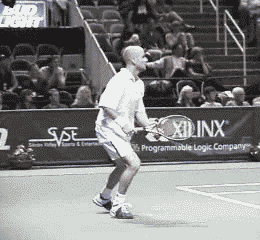
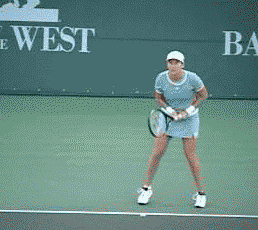
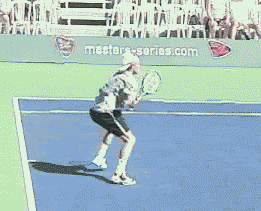
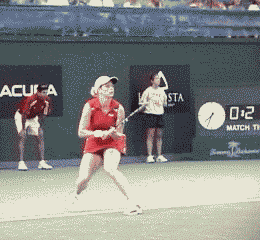
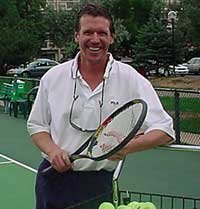 Stephen Robinson is the co-founder and developer of The Magis Group, LLC, a company providing stress-management, personal development, team building, and leadership training to businesses, education, government, health care, and non-profit organizations.
Stephen Robinson is the co-founder and developer of The Magis Group, LLC, a company providing stress-management, personal development, team building, and leadership training to businesses, education, government, health care, and non-profit organizations.